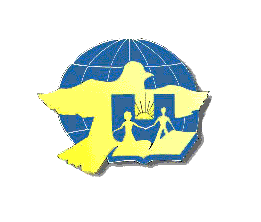Click Here to Visit our Sponsor

|
"Fredensborg" |

|
|
Norwegian Slavetrade Norwegians like to think that slave-trade was 'none of our business'. However, Mr. Leif Svalesen's studies of the slave ship "Fredensborg" does definitely 'kill' that misconception. Norwegians transported slaves, manned the slave forts and carried the goods which were produced by the slaves. In 1974 Leif Svalesen, a Norwegian skindiver from Arendal, found a wreck in the shallow waters off the little town of Arendal. This wreck was going to change his life, - it was the wreck of the slaver 'Fredensborg' Later, Mr. Svalesen and his partners realized that this was actually one of the most well-documented ships in the official Danish archives. Today we know that 'Fredensborg' is the best documented slave ship which has ever been found. Mr. Svalesen's studies of the slaver from 1974 till today has resulted in a UNESCO supported book about 'Fredensborg', and given him the Nordic seat in an international UNESCO committee working with projects related to the Atlantic Triangular Slave Trade. The slave ship 'Fredensborg' went down off the Tromøya island not far away from the little town, Arendal, December 1st, 1768. Everybody onboard was saved, however, two crew-members died later and were buried in Arendal and Flosta. A passenger, a slave trader, died, too. The special about 'Fredensborg' is that all the remains found in the wreck are so closely related to the triangular trade. In addition it is the only found vessel which was surely wrecked while being actively slave trading. The Triangular Trade is the trade between Europe, Vest Africa and America (esp. the Caribbean) based on export of industrial commodities from Europe to Vest Africa, slaves from Africa to the Americas, and colonial products from America back to Europe. The recovery of items from 'Fredensborg' did really visualize this trade. The divers found teeth from hippos and elephants, and during the final dives, also chains from the slaves. Mr. Leif Svalesen was deeply moved by this proof of the destiny of innocent Africans, and he decided to sail the triangular trade route from Norway to West Africa and the Caribbean in order to investigate the pattern of the system. And - he found the 'thread' leading from a little bay in Norway to the old Danish-Norwegian colonies in today's Ghana, and to St. Croix and St. Thomas in the Caribbean. Everywhwere he found links to Norway. In Ghana there were Norwegians at all levels, from ordinary soldiers to governors. On board the ships there were Norwegian sailors, and due to winds and ocean streams the ships often harboured in the southern parts of Norway, where they also got new supplies of sailors, water, food, etc. At that time Norway was the 'little brother' in a union with Denmark. Therefore, Norwegians mostly played the minor parts in the triangular drama, as sailors and low-ranking officials. However, we did import the main product of slavery, sugar. We had refineries in the cities of Halden and Trondheim, which tells that we brought the toil of the African slaves to Norway for profit. The Danish-Norwegian slave trade brought approximately 100.000 Africans to the New World as slaves, and according to Mr. Svalesen there is no reason to believe they were better treated than other slaves. The Captains of the ships had to follow strict instructions for how to handle the slaves in order to 'maintain peace and order'. However, the death toll was high! During "Fredensborg's" last voyage 30 Ghanese slaves out of 265 died. In addition 16 of the crew died, and two passengers. Mr. Svalesen tells that his research during the last 20+ years has brought him into a rather dark part of human history, however, the cooperation with people along the 'triangular trail' has really made his efforts meaningful, - and he carries on his struggle to reveal the truths about the Triangular Slave Trade! (This is a relatively 'free' translation of an article in the Norwegian newspaper, 'Vårt Land', by Mr. Øystein Franck-Nielsen) It should be mentioned that Mr. Svalesen has written a book about the last voyage of 'Fredensborg'. The issue of this book has been supported by UNESCO, and there should be Norwegian and English versions available today. |
|
GMdata Home |
Slavetrade Main |
Comments, etc. |